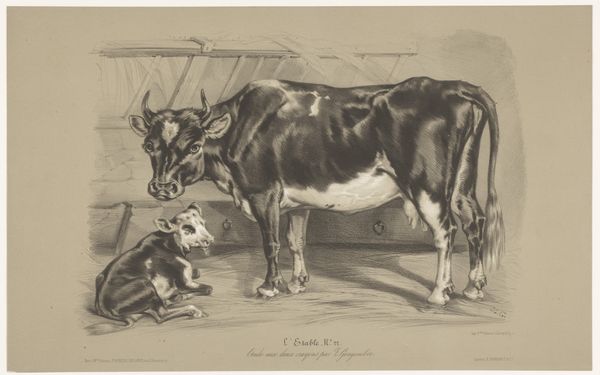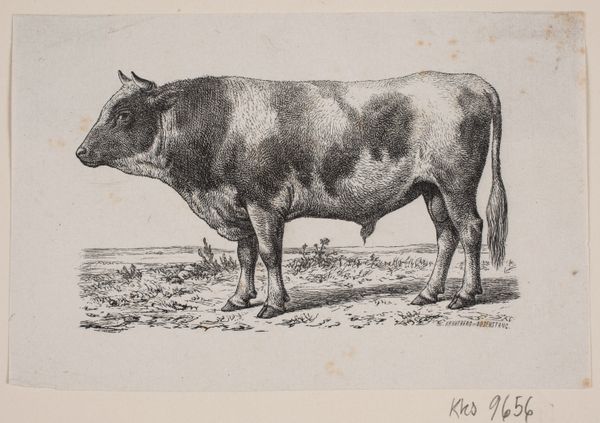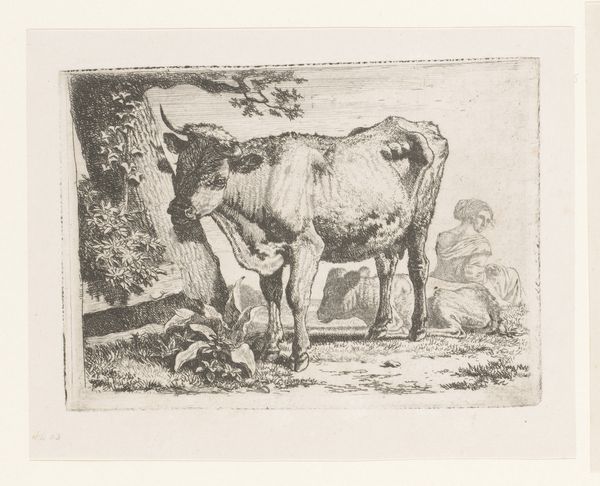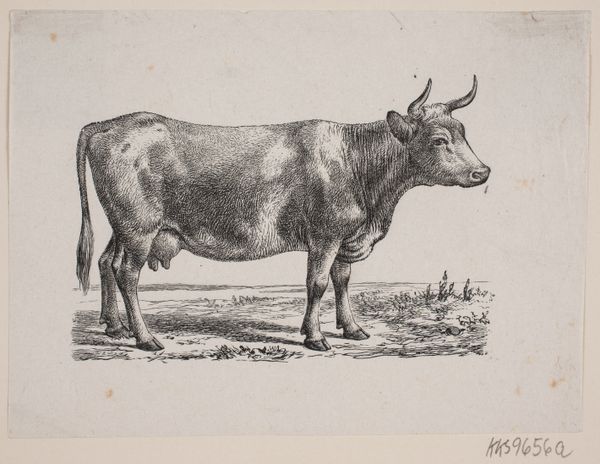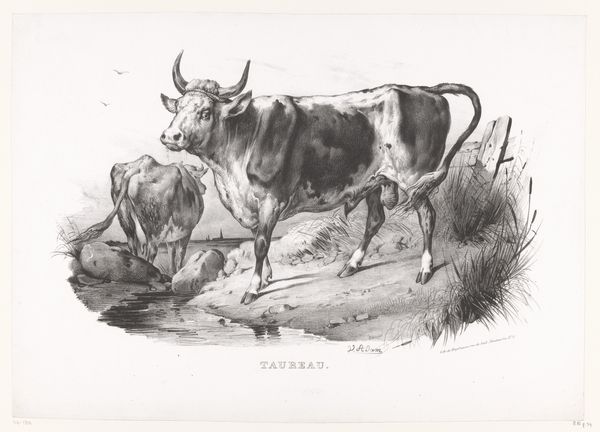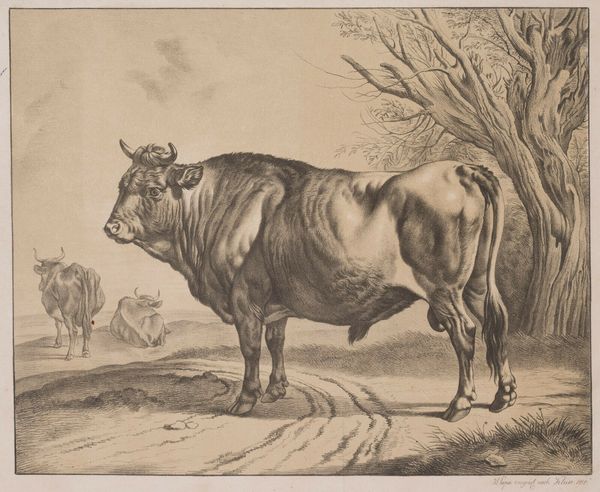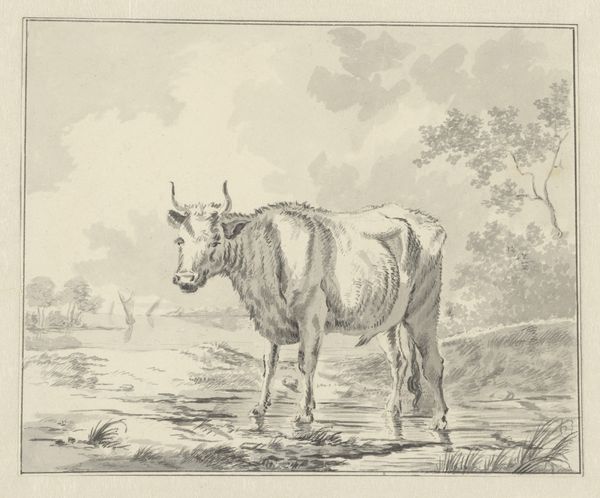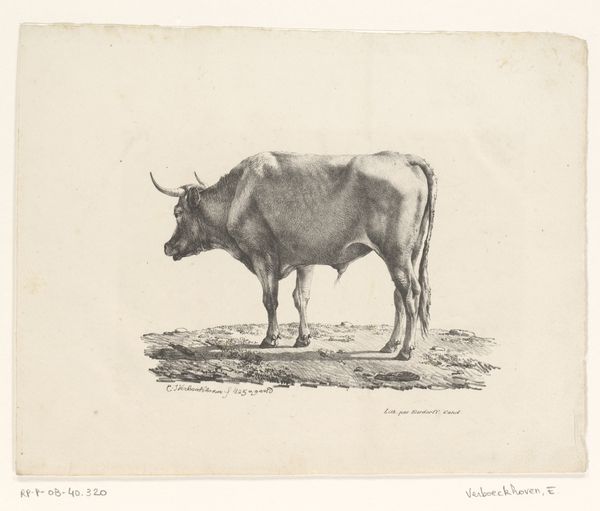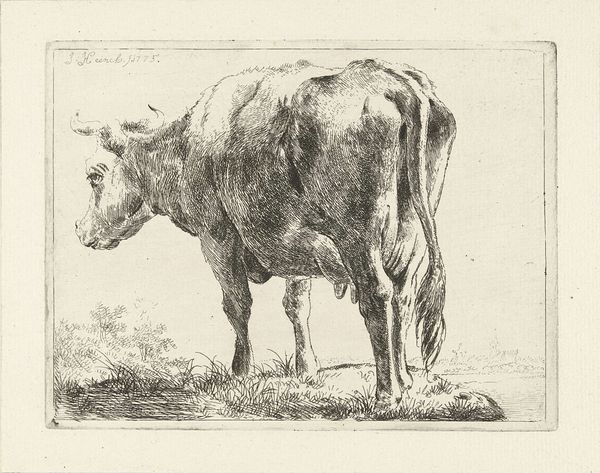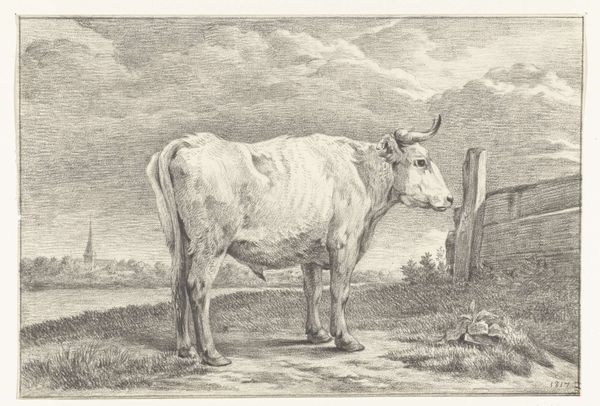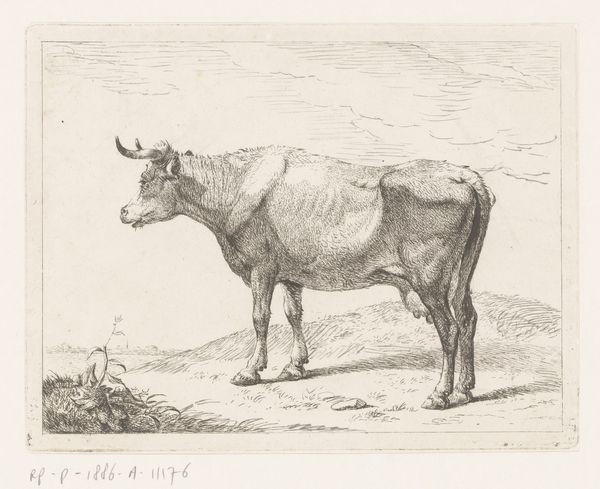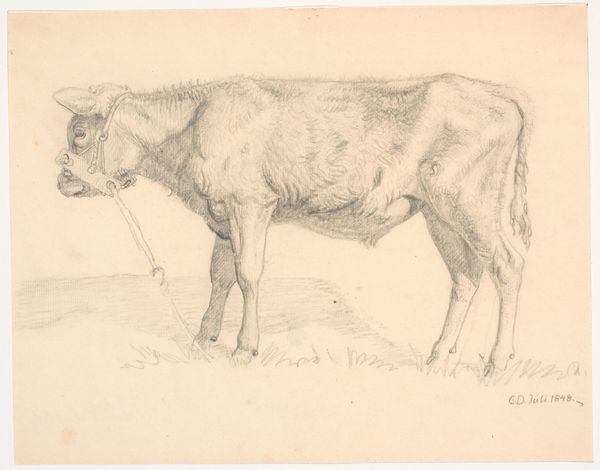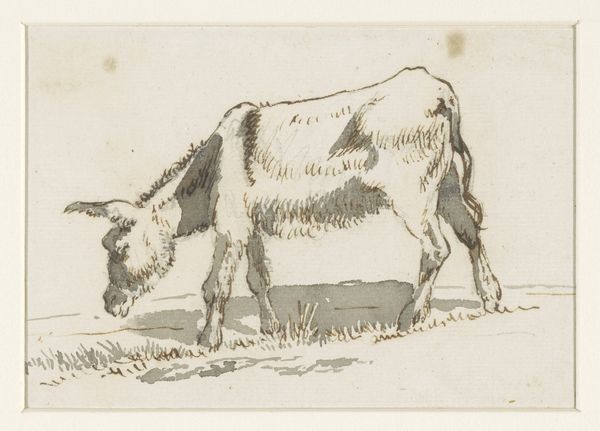
print, engraving
#
portrait
# print
#
landscape
#
genre-painting
#
engraving
#
realism
Dimensions: height 308 mm, width 496 mm
Copyright: Rijks Museum: Open Domain
Curator: Good morning. Today we are looking at “Stier in een weiland” or “Bull in a meadow”, a print realized before 1870, credited to Joseph Zephyris Gengembre, and housed here at the Rijksmuseum. Editor: There’s something wonderfully solid about this. It’s not just an image of an animal, but the weight of the bull seems captured, almost tangible through the engraved line work. Curator: Indeed. Gengembre worked primarily in printmaking, and this engraving offers an intriguing insight into how the industrialization of image reproduction affected artistic representations of agriculture and the rural idyll. Editor: The composition feels… stage-managed, perhaps? It's as though the bull, with its rather fashionable coloring, is an actor positioned just so against this carefully neutral background. It certainly reminds one of 19th-century salon paintings of prize-winning livestock, which catered to emerging class and consumer interests. Curator: Exactly. Consider the broader context. These kinds of images become increasingly common during a period when the romanticized vision of rural life clashed starkly with realities of agricultural labor and urban migration. Editor: So this artwork not only captures a bull in a meadow, but reflects this complex social relationship with working animals in pre-industrial settings. The engraving, with its detailed rendering, likely found its way into countless homes, reinforcing those pastoral myths. Curator: The scale is also interesting – it's not miniature, meant for private reflection. It was produced for widespread distribution, a relatively accessible luxury. Editor: You know, viewing it today, I see the remnants of an art form clinging to realism in the face of profound societal shifts. Before the rise of mass print media, images like these offered powerful social commentary about class values in Europe. Curator: Thank you. It is in understanding both what we are looking at, and what surrounds what we are looking at, that we can understand any artwork best. Editor: Agreed. A deeper appreciation lies in acknowledging art's enduring connection to our complex shared history.
Comments
No comments
Be the first to comment and join the conversation on the ultimate creative platform.
